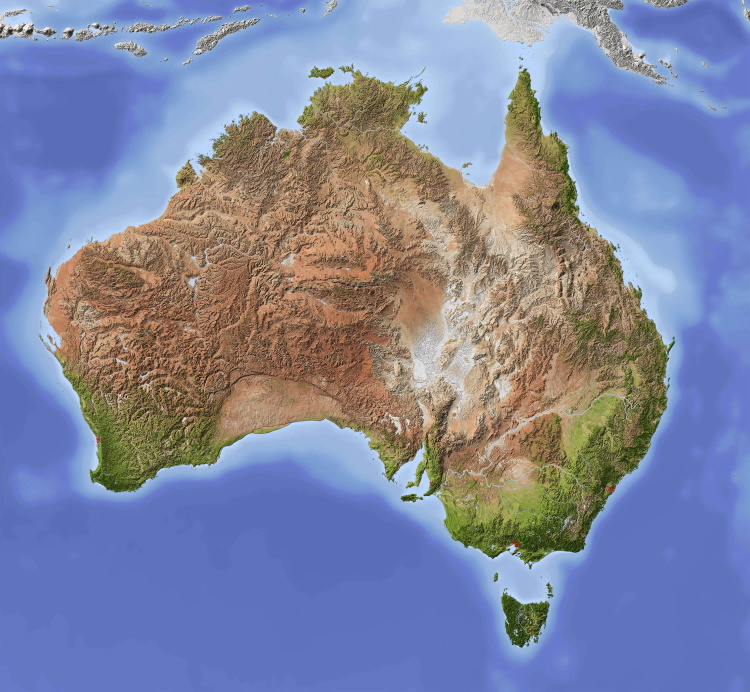The Coalition’s commitment to undermine Australia’s push to renewables is getting more creative – and desperate – by the week, with new claims that the federal government’s 82 per cent target is putting a flame under the cyber security risk posed by rooftop solar inverters.
Opposition home affairs and cyber security spokesperson James Paterson, late last week released a statement claiming the Albanese government’s “rush to renewable energy” has exposed Australia’s electricity grid to “potentially catastrophic cyber attacks.”
Paterson – a former fellow of the fossil fuel funded lobby group, the Institute of Public Affairs – is virulent anti-renewables and, like many of his Coalition partners, pro nuclear.
He says his latest concern is focused on a key part of the “renewables rush:” the almost 20GW of rooftop solar installed by Australian homes and businesses, even though the vast majority of it was installed on the Coalition government’s watch, particularly the push to “smart inverters”.
“Experts have said that the real danger point comes when these products reach a critical mass, when they reach a significant proportion of our rooftop solar and therefore a significant proportion of our electricity grid,” Paterson told Sky News on Friday.
“And then that could be disrupted by an external party, by a signals intelligence agency like the People’s Liberation Army’s cyberspace force or the Ministry of State Security cyber hacking unit.
“And that could not just damage those inverters and that source of power, it could actually do damage to our grid as a whole and take our whole grid offline,” he said.
“We cannot afford for our electricity grid to be riddled with exploitable cyber security vulnerabilities in the most dangerous strategic environment since World War II.”
The reality is somewhat different. It is true that Australian consumers continue to pile on the panels, at near record levels, in response to the price hikes caused by the very technologies that the Coalition is attached to, coal and gas.
Bizarrely, the Coalition is now ramping up its call for another even more expensive technology, nuclear power. Opposition leader Peter Dutton has made it a major plank of Coalition policy and the party has now imagined something called “micro nuclear” which it says can power hospitals and mines.
Liberals deputy leader Sussan Ley told the ABC Insiders program on Sunday that nuclear was the solution to soaring power bills. She was not pressed on why choosing the world’s most expensive technology – as described by most experts – would help address that problem.
Meanwhile Andrew Liveris, the former Dow Chemicals boss rolled out by the Coalition amid Covid to push for gas, has used his platform as head of the Olympic Games organising committee to suggest small modular reactors be rolled out in Brisbane to help power the games in 2032.
He said he hadn’t really thought about it, hadn’t mentioned it to either the state of federal governments, or even considered if it was possible, or in whose backyard the nuclear reactors should be located.
But his ramblings were enough to warrant a front page lead in The Australian, which along with the AFR is leading the conservative campaign for nuclear and against renewables.
Paterson is not wrong about smart solar inverters being vulnerable to cyber attacks. Like anything device that is connected to the public internet, a smart solar inverter might be hacked and used for nefarious purposes.
The federal government is aware, the Australian Energy Market Operator is aware, and the industry is aware.
How quickly this might become a threat to national security, or “take the whole grid offline,” and how much Labor’s ambition on renewables might be increasing these dangers, are up for debate.
Grace Young – chief innovation officer at WattWatchers and one of the experts cited in a “fact sheet” distributed with Paterson’s media release on Friday – says she “cannot agree” with a number of claims being made by the Victorian Liberal MP.
“Cyber security in this space is a concern,” says Young, who last week gave a presentation on this very subject at the EnergyNext conference in Sydney.
“We need to consider policy and protections against the sorts of threats that we’re seeing and can foresee, but it’s not something that should be stopping progress towards renewables,” she told RenewEconomy on Monday.
“Certainly from my perspective, and from our company’s perspective, where we are here providing technology solutions to advance the development of renewables in a safe and secure way, we don’t see any reason why we shouldn’t be continuing to pursue that.
“There’s plenty that’s being done and there’s plenty to do – we need to be ever vigilant, but it should definitely not be something that stops requires us to stop.”
Meanwhile, Young adds, there are more pressing threats to the stability of Australia’s network, and to the security of energy supply, that have “nothing to do with with Chinese inverters” and everything to do with our dependence on fossil fuels.
“We are looking at mandated control mechanisms for solar over the next 18 months or so across the eastern seaboard – we’re not looking at an imminent threat.
“We need to be vigilant, because these systems are being developed with a 10-year horizon. But right now, we need, more, to offset the potential for disruption and increase resilience of the network [through renewables].”
Young also stresses that the shift to distributed energy resources has, in no small part, been driven by the need to create a much more resilient grid, particularly as climate change brings more unpredictable weather extremes.
“An islandable microgrid or an islandable feeder is far more resilient a sub-system … and means that the overall grid can be more stable if one segment goes offline or one segment is interrupted.
“The more centralised infrastructure that we have is far more susceptible to … attacks and disruptions,” she says.
Young also questions Paterson’s focus on the threat from China made inverters, which currently dominate the Australian market – with around 58% of the rooftop market.
“Smart inverters are internet-connected devices that can be controlled remotely over the internet, and are overwhelmingly supplied by manufacturers with links to the Chinese Communist Party,” he said.
“We know that critical infrastructure networks like power are of great interest to signals intelligence agencies in foreign authoritarian states, including China.”
But Young says that even if we took the “illogical” step of immediately banning all Chinese inverters, the security issue is still there, because it comes with the kind of control functionality that is essential for balancing the grid as we take up more renewables.
“We need to focus on that,” she tells RenewEconomy. “It’s got nothing to do with a specific country …it’s a whole bunch of different things, and that [particular cyber security threat] could come from anywhere.”
A distributed grid with renewables everywhere is much safer from attack than a centralised grid with 2 or 3 big power stations.
I’m not against nuclear… it’s just to expensive to install compared to solar and wind. However I know which one out of solar panels and a Mini nuclear reactor I d rather have taken over by hackers.
“And that could not just damage those inverters and that source of power, it could actually do damage to our grid as a whole and take our whole grid offline”
This position honestly baffles me. On the traditional power generation model, the electricity is generated outside town and transported to the people via large power lines that have effectively zero physical security. For negligible cost, you can easily take out the power to a city. You don’t need to attack the power station itself. How the power itself is generated is irrelevant for the sake of this argument.
With power being generated by every third house in the suburbs however, you can’t take that out. A tiny proportion of them will even connect their inverters to the Internet. Of those who do, they’ll likely be behind routers at the very least. Compromising them en-masse if even possible is going to be significantly harder than taking out a few of those big towers.
My problem with nuclear is that it’ll inevitably be run by a greedy corporation that will cut corners to make a profit. The failure mode of wind/hydro/solar isn’t catastrophic.
“Paterson – a former fellow of the fossil fuel funded lobby group, the Institute of Public Affairs”. That’s all you really need to know, the IPA are a traitorous bunch of trolls.
I always thought the Liberal part was meant to be socially conservative, fiscally progressive… But they seem to be socially regressive, and fiscally corrupt.
Why do they keep receiving so many votes? What part of their platform appeals to working class Australians? The bit where they drive the cost of living higher, or the part where they siphon the publics money in to their own pockets?
I just don’t get it.
I think the reason why the working class continue to undermine themselves (especially people from the older generations) is the main stream media channels (9, 7, sky, any Murdoch newspaper) are owned by billionaires with vested financial interest in getting the working class to vote against their own financial interest, by convincing them it is good for the economy, when really the billionaires consider themselves to be the economy, and what they mean by it will impact the economy is that it will impact them.
This is why those news sources have always actively promoted the LNP, while actively demeaning the Labor party. They don’t even need to say any of these things outright, they get away with it by allowing LNP MPs to blame everything wrong on labour while the LNP are the government, but actively promote the LNPs active opposition as good when they aren’t in government. This is completely contradictory to how they neg Labor for being an opposition to the LNP when they are in opposition.
Ultimately, they created a cognitive dissonance within the working class to get them to vote against their own interests.
socially conservative, fiscally progressive
Well fiscally “progressive” by their view means cutting taxes for the rich while cutting spending for the poor. And that fits with the traditional conservative view of making sure that society is as unequal as possible.
Yeah if anything liberalism is supposed to be socially “progressive” (in the #rainbowcapitalism way) and fiscally reformist but still rooted in the instrinsic conservatism of capitalist values.
I just don’t get it.
The answer you’re looking for is racism, religion and riches.
Nobs. Who do they think is going to be building their reactors if they push to get one built?
Just remember - wasn’t too long ago the Liberal party was receiving Rolex watches in brown paper bags from Chinese spy’s posing as donors.
Record high global temps on the daily for the past 3 weeks and still these greedy spiteful sad fucks remain unphased
Who in their right mind connects microinverters to the Internet?
Just because the device says “smart”, doesn’t mean the OEM was.
People that want to monitor their performance from the office.
People who buy into the Internet of Shit and chinese cloud to do that only have themselves to blame.
How do you want to find out how your solar investment is performing?
By looking at a 15 EUR meter with a display. If you want a remote reading, use a 30-40 EUR Tasmote. Or a suitable Shelly, if your system is bigger.
I’ve figured that my ROI time is 2-2.5 years so I don’t feel the need to do it daily.
I don’t know much about how these things work, but there must be some valid use cases for it, right? @[email protected] already shared the obvious trivial one, but are there other, less “shallow” reasons to do it? Maybe if you were part of a community battery system or something like that?
There are plenty of third party tools to do that securely, and even cheaper. Putting insecure, leaky shit on your network for the sake of convenience…
Sorry, like I said, I don’t really know how these things work. Do those other tools do it without network involvement? I’m talking about things like being able to choose how much of your energy is going towards your own battery vs being made available to the wider network, potentially compensating differently based on the energy generated, etc.
Power meters for 15 EUR just have a display, no network. Tasmota plugs have a built-in webserver available on you WLAN and cost about 20-30 EUR. There are also devices from Shelly. If you want to collect your history, there are home automation tools like Home Assistant. You can use a VPN to your home network or push the results onto a world-visible webserver to access them remotely.
None of this involves Internet of Shit crapware, and random script kiddies remotely bricking your microinverter.
is virulent anti-renewables and, like many of his Coalition partners, pro nuclear
I’m guessing that the consequences of one of those being subjected to a cyber attack/sabotage is not on par with the other.
Obviously they’re going to build nuclear reactors that don’t have any computers at all. Totally hacker-proof!
The new and improved UNited States of Australia.
Ah so much casual racism, trying to be covered Under helping here, not quite a full dozen cookies there








